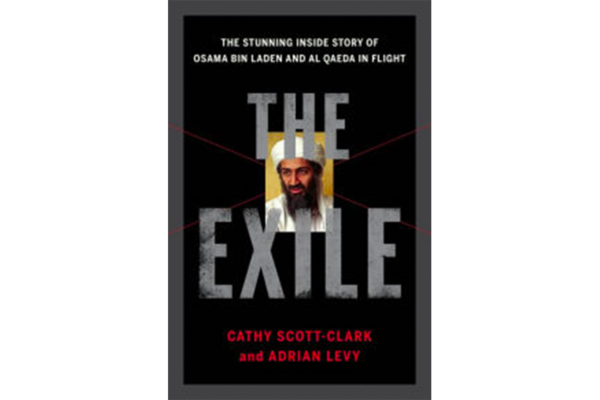
Long before the War on Terror launched in the wake of the 9/11 attacks, Osama Bin Laden was at the top of the Most Wanted Lists of the FBI and Interpol, sought in connection with half a dozen bombings and the founding of the terrorist organization Al-Qaeda. He was a very recognizable man with a substantial price on his head, and the hunt hugely intensified after 9/11.
The world's most wanted man was of course by extension the world's most desperate fugitive, but unlike most other well-known fugitives – the South Boston gangster Whitey Bulger, for instance – Bin Laden continued in his old job, as the leader of Al-Qaeda, the man they called “the Sheik.” This multiplied the logistics of his flight enormously and fills the story of the years between 2001 and his death in 2011 with a host of 21st-century details – grubby data sticks filled to capacity with lethal information, often-thumbed USB drives, encrypted grey-market cell phones – that somehow seem out of place in the story of a man who spent a good deal of time hiding in caves.
The tale of that long, weird flight from justice now has a magnificent telling for general audiences. The Exile: The Stunning Inside Story of Osama Bin Laden and Al Qaeda in Flight, by journalists Cathy Scott-Clark and Adrian Levy, is a truly impressive feat of journalism, both the closest we're ever likely to come to a day-by-day account of Bin Laden's life in those years and also an intensely gripping reading experience.
The book begins with a quick foregrounding in the 9-11 attacks, which were masterminded by, among others, Khalid Sheikh Mohammed, nicknamed “Mokhtar,” whose admission to Bin Laden's inner circle was “a breath of fresh air for a visionary but disorganized jihad leader who spent his days surrounded by blunt-knuckled and illiterate Yemenis armed with sickle-shaped Hadrami daggers,” but the tale really commences with Bin Laden's escape from the Battle of Tora Bora in late 2001, when he slipped through the fingers of the US and allied forces and provoked a manhunt that would end up lasting a decade and costing trillions of dollars.
During that long manhunt, Bin Laden and his henchmen were constantly splitting their focus between eluding capture and committing fresh atrocities. Scott-Clark and Levy anatomize both sides of this world of Al Qaeda fighting while on the run, touching on lesser-known plans and all of the ones that were highlighted in the media, from the kidnapping and murder of Wall Street Journal writer Daniel Pearl in 2002 to the near-incident of the “shoe bomber” Richard Reid, about whom our authors mention that Mokhtar “could see the potential of a bomb strapped to a British passport.”
But behind the headlines, the story told in "The Exile" is a gritty, sordid one, focused on the mostly pathetic details of the fugitive life, unfolding in dusty borrowed rooms in half a dozen bolt-hole locations. Bin Laden is always straining, through visiting subordinates, to know more about the world he couldn't dare re-enter, with his wives miserably raising chickens in hastily-converted dirt lots and his children playing battered old video games or doggedly tuning old transistor radios in hopes of catching a Western pop song.
And every reader knows the climax. On May 2, 2011, a US Navy SEAL unit descended under cover of darkness on the Abbottabad compound in Pakistan where Bin Laden had been located. “After six years of total isolation, the children having constantly been berated for making the smallest noise or complaining, Amal [Bin Laden's wife] realized with cold dread that Americans were swarming in their home, readying to kill them all, and there was no emergency procedure,” Scott-Clark and Levy write. “Their safe house was a death trap.” There are conflicting accounts of the exact circumstances of his death, but as Navy SEAL Robert O'Neill put it, “He died afraid, and he knew we were there to kill him. And that's closure.”
The sense of closure was an illusion, as the careful reporting of "The Exile" makes chillingly clear. The flight and disarray of Al Qaeda formed a temporary power vacuum that allowed the formation of new splinter extremist groups like the so-called Islamic State, led by Abu Omar al-Baghdadi, who soon began referring to himself as “commander of the faithful” – leading to confusion in the ranks: “Was a former policeman who had made ends meet before the US war by repairing televisions and dishwashers really now more important than Osama bin Laden?"
And in some ways the most troubling detail: Bin Laden's son Hamzah, raised uneducated in the prolonged trauma of a paranoid religious conclave, anointed by his father as the future leader of the cause, has recently surfaced in audio recordings urging his followers to “follow in the footsteps of martyrdom-seekers before you.” The US State Department has added him to their terrorist watch list. The Exile's deadly legacy lives on.
No comments:
Post a Comment